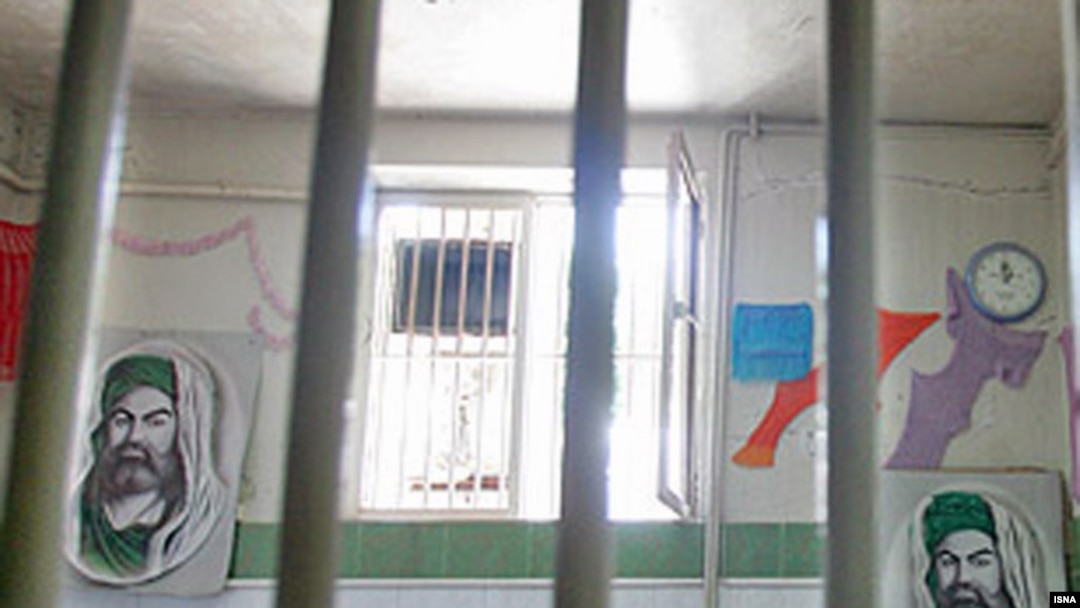The three -- academics Haleh Esfandiari and Kian Tajbakhsh and peace activist Ali Shakeri -- are only a few of those who have been held there. They also include Amir Kabir University students Ahmad Ghasaban, Majid Tavakoli, and Ehsan Mansuri, who remain in Evin.
Radio Farda broadcaster Mohammad Zarghami spoke to several people who had been detained in that same ward of the notorious prison to learn more about the conditions there.
The ward is the detention center for Iran's political prisoners and is said to be run by Iran's Intelligence Ministry. It is also thought to be beyond the control of bodies like Iran's prisons authority.
In recent months, numerous reports of harsh conditions in section 209 have led Iranian officials to comment on the situation there.
A top judge within the prosecutor's office, Hassan Hadad, told Iran's official news agency IRNA earlier this month that section 209 is the best detention center in the world. He added that "some prisoners tell us they want to be transferred to the section 209."
'Torture In The Basement'
Sudabe Ardavan is a former political prisoner who was held in section 209 during the early years after the Iranian revolution. She gives a daunting account of her experience in prison.
"At about 4 or 5 p.m. they would turn off the lights in our cells," Ardavan says. "Only a little bit of light would get in from a tiny window near the ceiling. After sunset, we were left completely in the dark, so we could do nothing but sleep. But when we put our heads down, we heard voices from the basement, where prisoners were tortured. At night, when things quieted down, they came to collect the death-row inmates."
She said she has never been to the basement of section 209, but she recalls a cellmate who was taken there for interrogation.
"One of my cellmates was a 15-year-old girl," she says. "Every day, they would take her down to the basement and interrogate her. She described the place as resembling a bathroom, with dirty walls and a mix of blood and water on the floor."
Following the 1998 student unrest, many young student activists were jailed in section 209.
Human rights activist Shiva Nazar Ahari was kept at Evin for one month in 2001.
"Before we entered the ward they blindfolded us and filmed us," she says. "I was waiting there for one of my friends so that we could go up the stairs together, but [prison guards] confronted me and told me, 'You have no right to do these things here.' He dragged me."
Ahari adds that the cell was about two by three meters and that there was a bright lamp there that shone on the prisoners 24 hours a day. After three or four days in the prison she says she was left in complete isolation. She remained in solitary confinement for about one month and was denied permission to contact her family for the first three weeks of her detention.
Fatemeh Haghighatju, a former member of the Iranian parliament's Committee for the Establishment of Truth who now lives in the United States, says that committee never succeeded in learning how many security prisons exist in Iran.
"We couldn't fully oversee the security operations because there was always the possibility that even if we knew about all the prisons in the country, the security forces would turn a house into a prison," says Haghighatju.
"I've met a youth of about 20 years, who had been interrogated on the anniversary of the student unrest," she says. "He told me that before he was transferred to Evin prison, the security forces took him to a temporary location in the basement of a Basij headquarters."
Kianush Sanjari, a former inmate of ward 209, claims to know prisoners who committed suicide under the pressure that they had to endure at Evin.
"I know prisoners who committed suicide because of the pressure in that ward, including Hamid Reza Mohammadi, who was in touch with an opposition television station based outside Iran," he says.
Sanjari recalls how Mohammadi, who he says was imprisoned for contacts with Iranian opposition media, died. Sanjari says that after enduring five months in solitary confinement, Mohammadi could no longer bear the situation and cut his veins with a spoon. According to Sanjari, another prisoner he knew hanged himself with his own clothes.
Solitary Confinement
But not all former Evin inmates recount the same gruesome stories. Bahare Hedajat, a member of Iran's largest pro-reform student group, Daftare Tahkim Vahdat, was recently released from Evin's ward 209. Hedajat says she never witnessed physical torture at Evin. But she stresses that solitary confinement causes great psychological distress.
The families of Amir Kabir students held in section 209 have alleged that the three have been subjected to physical and psychological torture.
Officials have denied reports that prisoners held in Evin are pressured or abused.
Amnesty International reported on September 26 that the families of the three Amir Kabir students were asked to go to the office of Tehran's chief prosecutor, Said Mortazavi, on 19 August. Mortazavi reportedly warned the families, saying they should not have given interviews or divulged information about section 209. As a result, he is said to have told them that the students would be held in solitary confinement and forbidden from family visits or telephoning them.
(Radio Farda's Azadeh Sharafshahi contributed to this report.)


